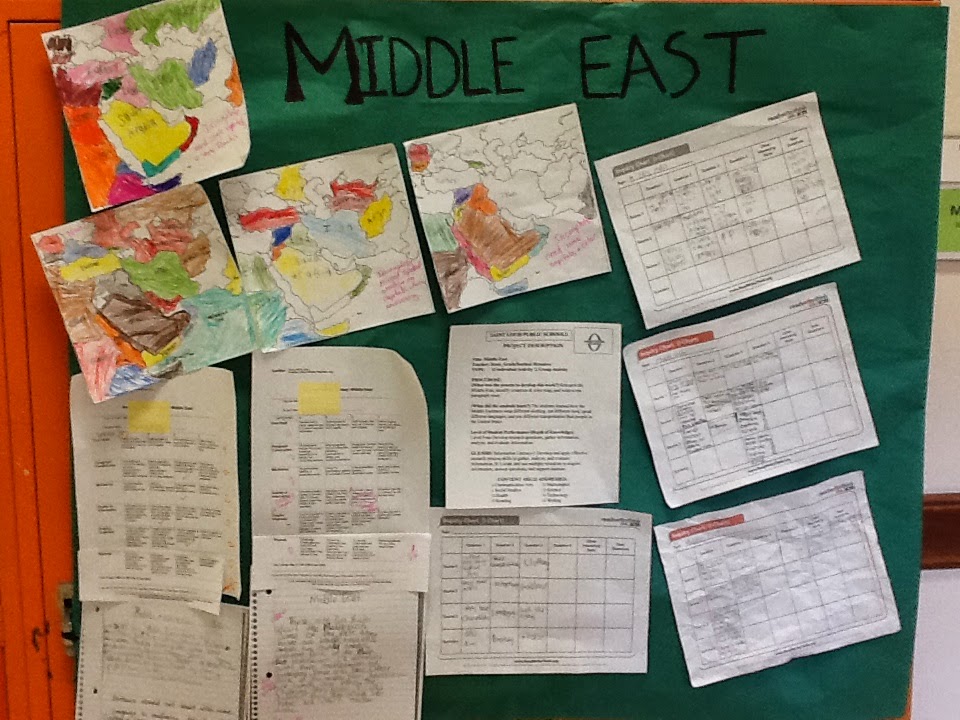Independent Practice provides an opportunity for the teacher to assess student mastery of a skill or objective and is usually attached to some sort of formal evaluation or grade. This is the "You Do" portion of a lesson where the teacher evaluates a student's progress toward a learning target.
This week I observed several excellent examples of Independent Practice throughout the building. In Mr. Wolfenden's class, students responded to "Quick Write" prompts. Posted around the classroom, Mr. Wolfenden posted a generic description sheet for these tasks as well as a rubric for what a 2 point, 1 point or 0 point response includes. This helped students understand their task but also made the evaluation objective.
In Ms. Colacino's class, students worked to prepare for the Smarter Balanced Assessment by completing a performance task. The task included reading, watching a video, recording notes, and completing a graphic organizer to record their findings (see copies of student work below). Students completed their final draft responses using their iPad after the teacher provided feedback and support throughout the process.
It is important during Independent Practice to differentiate the process and product for students. Here are some strategies that can be implemented to support Independent Practice effectively by using differentiation:
- Create leveled questions for assessments.
- Include a bonus section of challenging questions.
- Prepare different Do-Nows, worksheets, and so on for students at different levels.
- Use data to determine the degree of scaffolding and extra support each student needs.
- Group students according to the skills they need to develop.
- Communicate and collaborate with special education teachers to develop appropriate scaffolding and tasks for special needs students.
- Implement station work.
- Create individual "work contracts" so students have a clear path of what they are working on.
- Use Do-Now, exit tickets, and interim assessment to drive small group re-teach sessions.
- Create assignments with menu options by level (easy, medium, hard)- students can choose or the teacher can assign.
- Have observers sit by lower-achieving students during an observation to provide extra support.
Homework is another form of Independent Practice that can be used to gauge student performance and mastery. All students should receive some form of homework, which counts for 10% of the final grade. Here are some tips and strategies that can be used with Homework in your classroom:
- Develop homework center targeting specific skills identified by assessments.
- Review problem areas within homework assignments in class soon after an assignment.
- Have students fix homework errors and teach them how to scrutinize errors.
- Make tracking sheets for individual skills.
- Incorporate spiraled review in homework assignments: include questions and tasks from previously learned standards.
- Create leveled homework (student specific).
- Design homework that is aligned to the state test, interim assessments, etc.
- Use homework as "open book" quizzes.
- Encourage homework completion with classwide or schoolwide competition.
- Include above-grade-level challenge problems.
Hopefully these strategies and ideas will help you as you push your students towards mastery of objectives as we approach the MAP assessments!
































